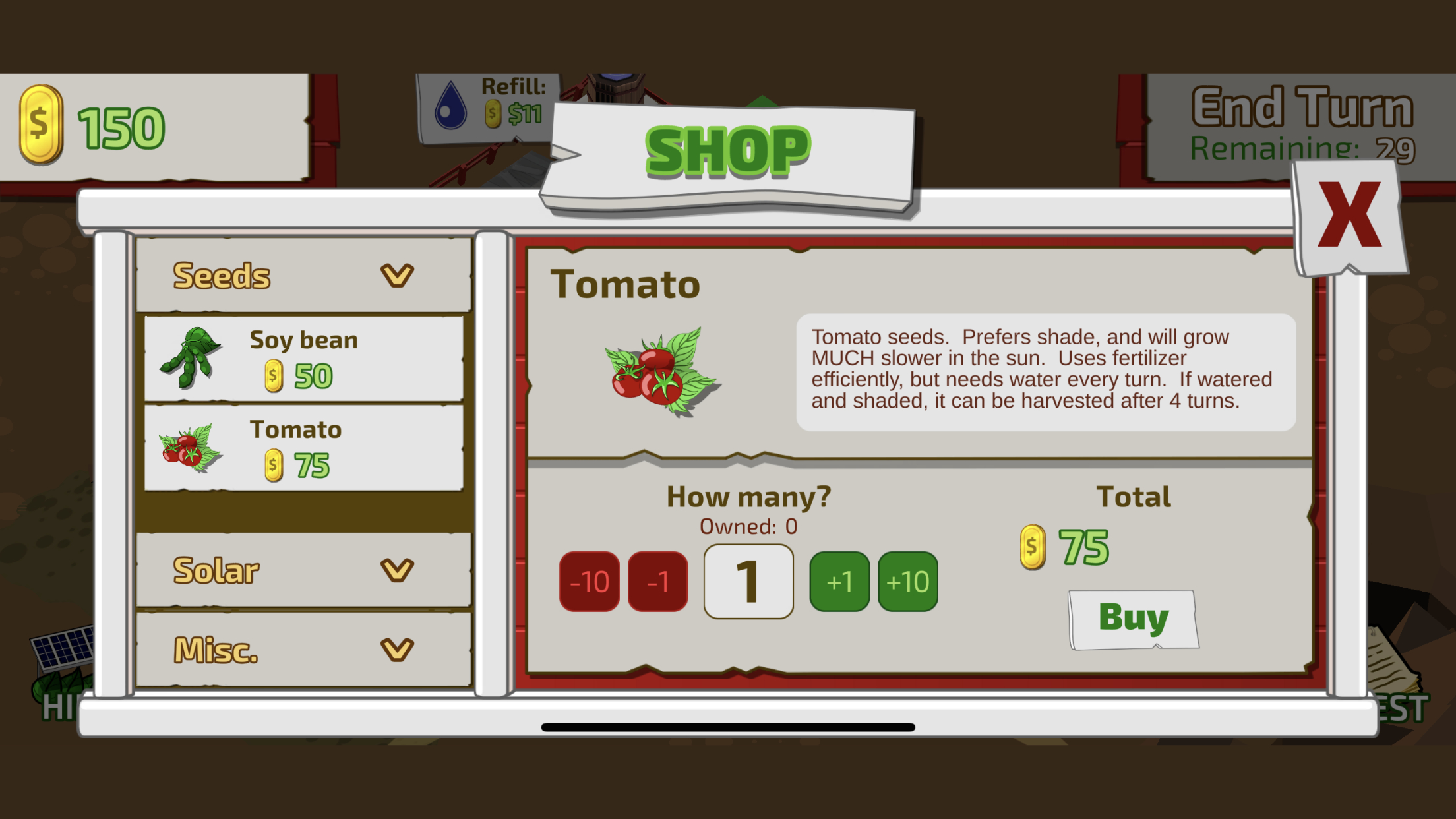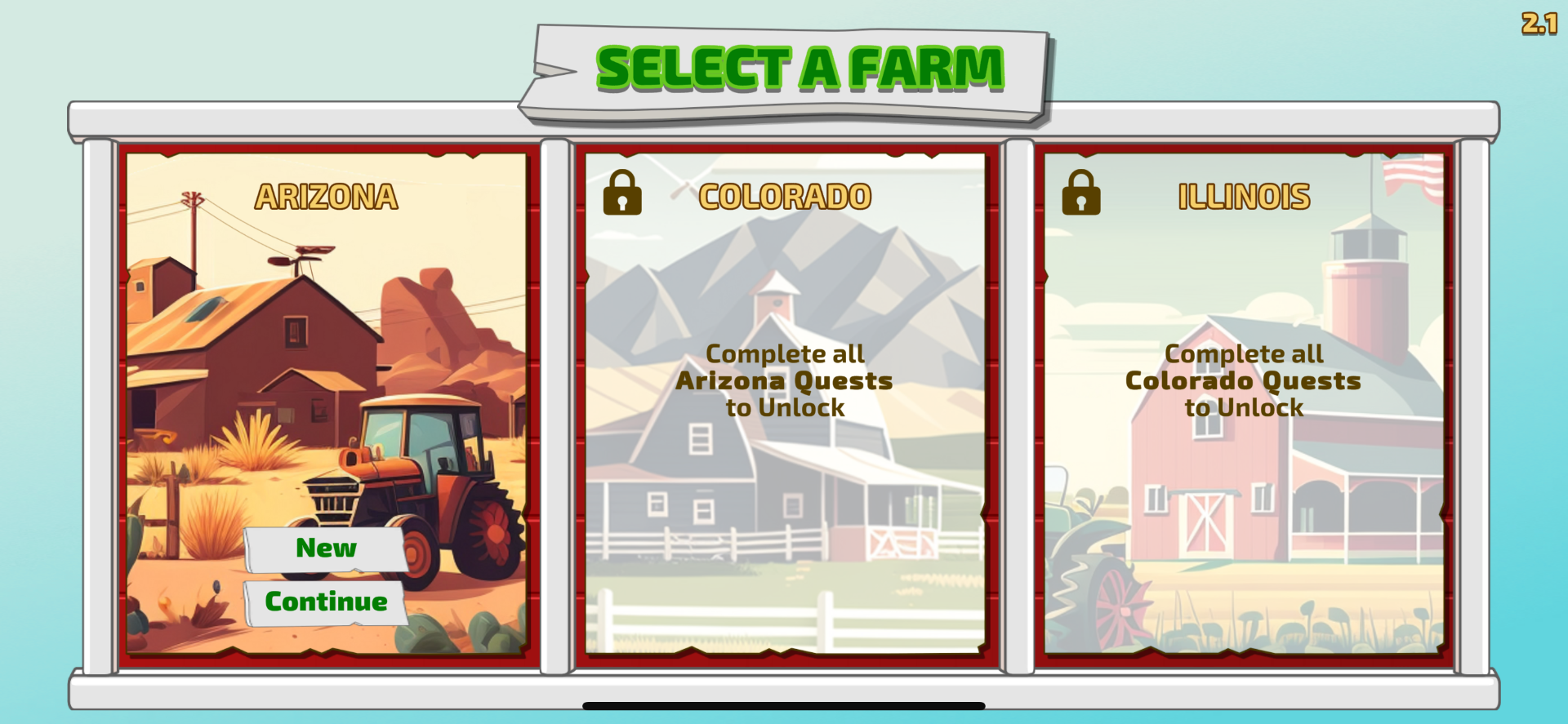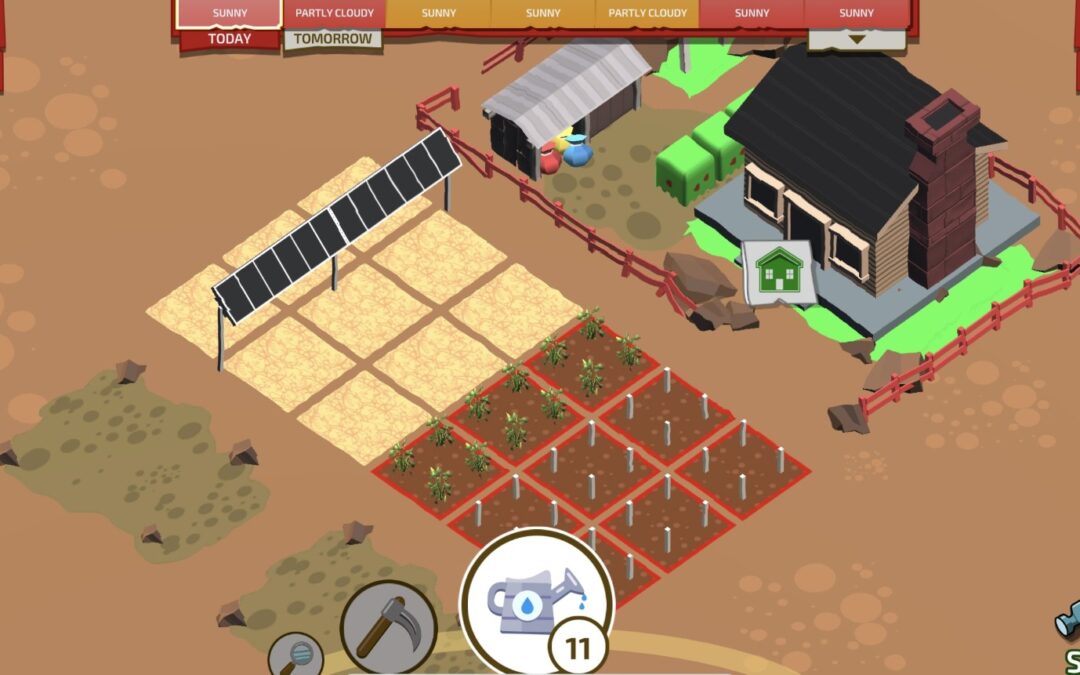Imagine a lesson on agriculture and sustainability packaged in vibrant colors, pixelated fields, and charming animations. Creators of the new educational agrivoltaics app, My Agrivoltaic Farm, available for download on iOS and Android, have accomplished just that.
The Sustainably Colocating Agricultural and Photovoltaic Electricity Systems (SCAPES) Project sports an interdisciplinary team of experts in agriculture and engineering who explore the use of cropland as a source of both solar energy and food production. The “agrivoltaics” project, led by iSEE Director Madhu Khanna, ACES DIstinguished Professor of Agricultural and Consumer Economics at the University of Illinois Urbana-Champaign, aims to increase the amount of sustainable energy and crops produced in these fields.
To complement this real-world research, the SCAPES Education Team set out to create an app that teaches players of all ages about the interconnectedness of agriculture and sustainability.
When players step into the charming, pixelated landscape of My Agrivoltaic Farm, they are greeted with a field of opportunities. Starting in their small grid-like Arizona farm, players gradually expand their plot into a full-fledged agrivoltaic farm, complete with solar panels, tractors, sprinklers, other technologies, and a variety of crops. With a shop available for every necessary piece of equipment and crop they would need — and a list of quests that unlock valuable rewards — the world of My Agrivoltaic Farm will keep players coming back for more.
Games like FarmVille, Harvest Moon, and Stardew Valley are known for their relaxing gameplay and aesthetics, drawing a wide audience into gamified farming. For many players, these games are entertaining because they are strategy-focused, using realistic simulations of weather patterns and agriculture to encourage the player to explore — and to fail. SCAPES educational researchers and game developers at Balance Studios collaborated to uphold this pivotal theme in My Agrivoltaic Farm.
 “We want people to experiment and learn about the range of impacts adding solar panels to farmland can have. And sometimes that means making sub-optimal decisions,” said H. Chad Lane, the SCAPES educational research lead and Associate Professor of Computer Science and Educational Psychology at the U of I. “Some kids go full tilt with just one crop because they think it’s fun. Some are like, ‘What if I stopped doing crops and only did solar panels?’ They realize that it works, but someone who’s doing both is progressing way faster in the game than you are, and they are learning which crops love the additional shade and how the solar panels benefit from the cooling effects of the crops underneath.”
“We want people to experiment and learn about the range of impacts adding solar panels to farmland can have. And sometimes that means making sub-optimal decisions,” said H. Chad Lane, the SCAPES educational research lead and Associate Professor of Computer Science and Educational Psychology at the U of I. “Some kids go full tilt with just one crop because they think it’s fun. Some are like, ‘What if I stopped doing crops and only did solar panels?’ They realize that it works, but someone who’s doing both is progressing way faster in the game than you are, and they are learning which crops love the additional shade and how the solar panels benefit from the cooling effects of the crops underneath.”
An additional goal for the app’s creators is to reinvent the perception of farmers and agriculture for audiences.
“I don’t know what your mental image of a farmer is, but in reality, it’s not what we were taught as kids growing up,” said Scott Tuinstra, Associate Creative Director from Balance Studios who collaborated on developing the app. “Farmers are using drones, they’re using AI, they’re using robotics. They’re taking a lot of measurements to see how crops are responding to different things.”
The SCAPES Education Team prioritized a healthy balance between the science of the gameplay and its effectiveness in teaching audiences about agrivoltaics.
“I’ve seen scientists committed to precision and accuracy, so they make it as realistic as possible, but that doesn’t always make sense educationally,” Lane said. “For example, soil quality is a huge deal in agriculture. But we don’t model that in the game because we needed to put our limited resources into the most educationally important features, such as teaching the relationship between solar panels and crops.”
However, the developers pushed for certain details to be included, especially if they pertained to important themes in agrivoltaics.
“The weather patterns in the game, for example, are all geographically realistic,” Lane said. “They cover a wide range, and they affect the underlying simulation that drives the game. If it’s cloudy, the solar panels don’t do as well. If it rains, you don’t have to water your crops as often. You might water and then it rains, and then you’ve overwatered. So all of these things affect the results and make the game more engaging at the same time.”
Although the game does not simulate soil composition, it does simulate soil moisture. Players can watch the soil turn different hues as they water crops. Once their plot gets large enough, they can even purchase a sprinkler system to increase efficiency.
“I love watching the sprinkler work. You have to work hard to unlock that feature, and it is extremely satisfying to watch,” Lane said. “I smile every time I see it go off.”
 A list of unique features makes My Agrivoltaic Farm stand out in a sea of educational games. For example, the art style of the app, akin to its simulation gameplay predecessors, such as FarmVille and Clash of Clans, is a favorite for the developers.
A list of unique features makes My Agrivoltaic Farm stand out in a sea of educational games. For example, the art style of the app, akin to its simulation gameplay predecessors, such as FarmVille and Clash of Clans, is a favorite for the developers.
“I like the art style,” said Heidi Klessig, Vice President of Client Relations at Balance Studios. “I think that the look and feel of the crops are fun and engaging, and there’s enough detail to be interesting. I think that the visual look and feel of it resonates with the age that we’re trying to hit,”
The SCAPES team is conducting educational research on the app, testing kids’ knowledge of agrivoltaics concepts in conjunction with the time they spend playing the game.
“We’re conducting research with this game on how to design effective educational technologies,” Lane said. “We want to know about the experience that it creates for someone, what ideas it evokes for them, what questions they have. That’s exciting to me. There are not many high-quality educational games like this out there.”
My Agrivoltaic Farm is available for download on iOS and Android! You can learn more about the features of the app on the SCAPES website.
— Article by iSEE Communications Intern Anjali Yedavalli
